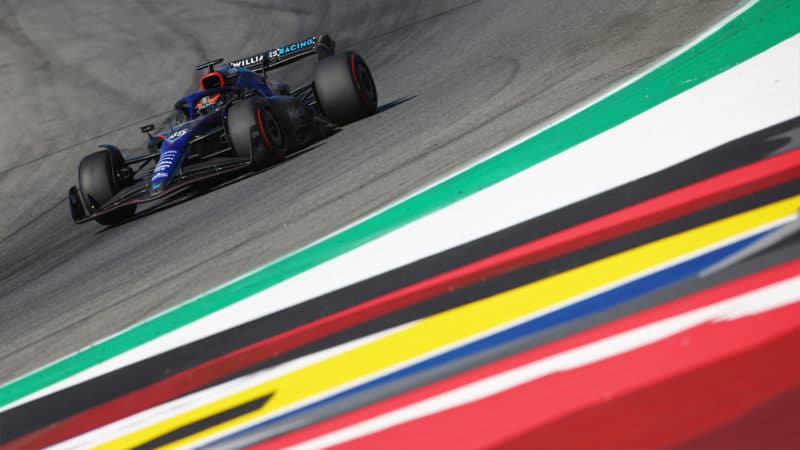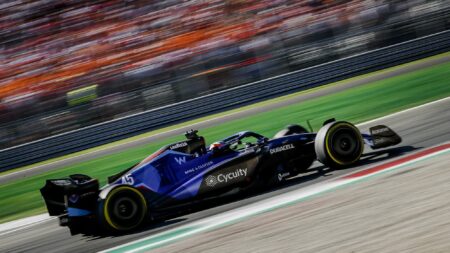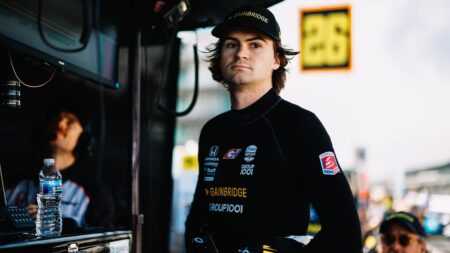Others have even suggested that the slightly-build Dutchman may not be strong enough and, certainly, he needed help out of the car post-race, his arms and shoulders numbed. But that’s not entirely surprising given any unfamiliar cockpit. It certainly helped that it was Monza and not, say, Singapore, but being slight never impeded Alain Prost, and we have power steering.
What’s probably not universally recognised is how difficult it is to do what De Vries did, at Monza of all places. The Autodromo Nazionale may not be that physical, but it offers other unique challenges.
Back in the day, I used to do some work with Toyota during between-race testing, when a driver’s testing mileage would easily outweigh his racing mileage over a season.
This was pre-2007, when F1 introduced a sole tyre supplier. So there was a Bridgestone / Michelin tyre war going on and tyre evaluation always formed a large part of any test. For Monza, that was supplemented by running the car with barely any rear wing at the same time as arriving at a suspension / ride height set-up compliant enough to allow the driver to bang the car over the kerbs through the chicanes, minimising time loss.
Jarno Trulli, something of an artist in a racing car, had his sensibilities offended by the need to bounce over kerbs and always used to approach a Monza test with his enthusiasm in check. He didn’t go as far as throwing a sicky, but was always happy when it was Ralf Schumacher’s day at the wheel!

Monza kerb-crashing wasn’t Jarno Trulli’s forte
Grand Prix Photo
The brief was always, “Your job today is to blat around Monza as fast as you can, braking as late as you can, taking note of how it feels and any tyre drop-off. Then come in, we’ll bolt on another of our 25 sets of rubber, and you do it all again. Okay?”
That was pretty much it all day long, with a fair degree of early chaos and red flags, as people acclimatised to braking down from 200mph for the chicanes with precious little assistance from any downforce, without swapping ends and littering the track with gravel, annihilating polystyrene bollards, etc. Or, suffering the odd brake failure with discs running at 1200C.
“We earn our money on a day like today…” Ralf once smiled, with the hint of a grimace.
The point is, to go quickly you need to have enough confidence to be happy to attack without the type of downforce normally commensurate with an F1 car, and enough feel to use all the road through the Lesmos and Parabolica without overdoing it. Hard enough if you’re a regular. But very, very tough if you are stepping in for a one-off.
De Vries did a solid job for Mercedes when he lapped within half a second of Russell in an FP1 outing at the French GP, and it was no doubt a blessing for him that he’d had the Friday morning Monza FP1 session with Aston Martin, in Sebastian Vettel’s car. Across 22 laps, he was just over a second shy of Lance Stroll, but on harder tyres with a different wing level. There was a brief excursion into the gravel, as there was in FP3 in the Williams, as he got a handle on the kind of challenge outlined above.
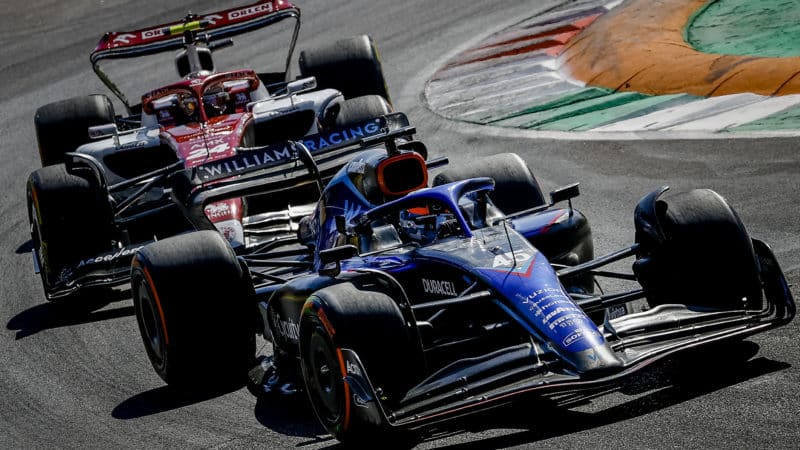
Under-pressure De Vries avoided a calamitous mistake
Remko de Waal/ANP via Getty Images
In the race, amid a DRS train, it would have been oh-so-easy for De Vries to make a points-losing error, especially as the late-race arm / shoulder pain crept in, but he kept it all together admirably. Whether or not it is enough to win him a Williams or Alpine seat for 2023, remains to be seen.
Elsewhere, there is a bit of controversy over the lack of an F1 superlicence for Colton Herta who, by the totting up procedure, is a few points shy of the 40 required to secure the necessary document.
The superlicence procedure was established to prevent the likes of Yuji Ide finding their way onto an F1 grid again, and to ensure that pockets stuffed with cash are not sufficient. You have to qualify on talent.
“How in the hell does Latifi qualify for a superlicence when a guy who’s won seven IndyCar races, does not?” was a question asked on Saturday night at Monza.
Well, that’s very simple. In what was something of a weak year for F2 (De Vries’s championship season incidentally) in 2019, Latifi finished second in the championship. And anyone who finishes top three automatically scores 40 points and qualifies. Which, generally, you’d figure, would be merited.
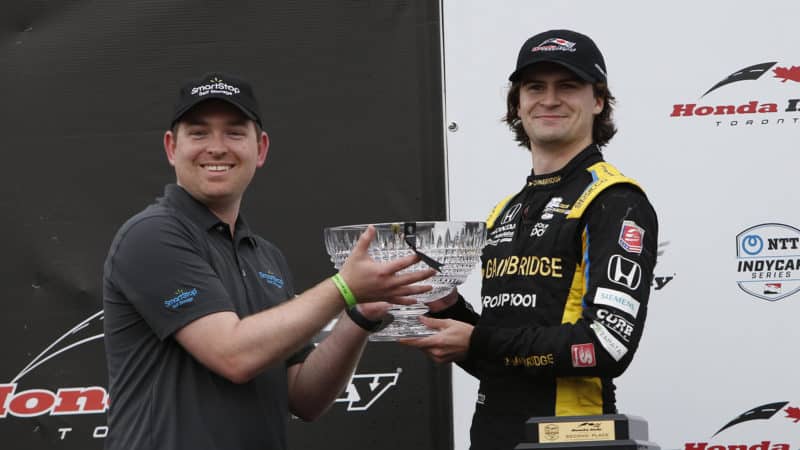
As it stands, IndyCar sensation Herta doesn’t make the grade for F1
Penske Entertainment
Herta, meanwhile, may not be Mario Andretti, but became the youngest ever winner of an IndyCar race, aged 18, in the 2019 Laguna Seca season closer. The following season, he finished third in the championship, which earned him 20 superlicence points. He has won races at places like Long Beach, Mid-Ohio, St Petersburg and Laguna Seca, against quality opposition. That he doesn’t qualify, is a total nonsense.
He wasn’t helped by a 2022 IndyCar season, concluded last weekend, in which he finished 10th. But consider this. There were five guys in with a chance of the title. The champion – Will Power for the second time – scores 40 points and automatically qualifies for an F1 superlicence, on a par with F2. But, the guy who finishes fifth, despite being within a gnat’s of the title, scores just eight. Yet, finish fifth in F2, and you pocket 20. Bonkers.
